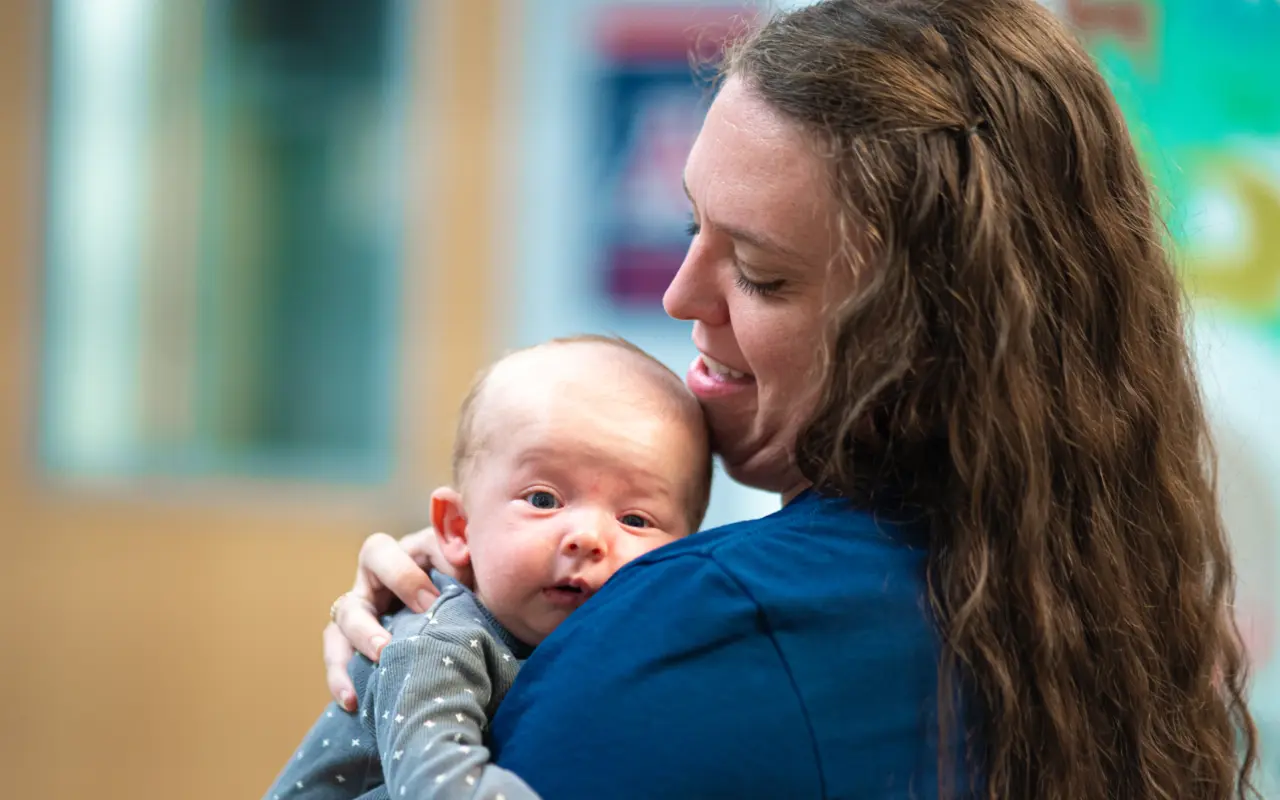By: Stephanie Gilboy, PT, DPT, Cert. VRS
Torticollis is a tightening of the neck musculature in infants.
This is typically caused by intrauterine crowding- which means that the baby ran out of space in the uterus. Intrauterine crowding can happen to younger and/or smaller moms that do not physically have a lot of internal room. We also see this in high percentages with the birth of multiples.
Torticollis is also common with babies who are breech and those who are stuck in mom’s pelvis or rib cage.
Essentially, any time a baby had limited motion in utero, they are at a higher risk for torticollis. While they were growing and developing, they were stuck in one position, so their muscles tightened.
Outside of intrauterine crowding, birth itself plays a role in torticollis. For vaginal births, if the baby was pulled out by one arm or forceps and/or suction cups were used, then this condition can occur. Also, preemies or anyone with NICU time is also at a higher risk of torticollis.
Symptoms of Torticollis
If your child has torticollis, you may notice that they always prefer to look to one side. This is because the neck musculature is tightened on one side, which will typically cause a preference for your child to look the other way. So, if your child prefers to look to their left, the issue lies on the right side.
Torticollis is closely linked to plagiocephaly- or a flat spot on the head. Children who present with a flat spot are close to 90% likely to have torticollis as well. This is because, since your child prefers to look to one side, the soft parts of their skull form around this- causing a flat spot.
Has your baby been diagnosed with torticollis? Learn What You Need to Know on the Spooner Blog.
Treating Torticollis
Historically, clinicians have looked at sternocleidomastoid (SCM) as the primary muscle involved with torticollis. However, recent research and clinical expertise has shown us that not only one muscle is tight. We can see shortening and tightness throughout the entire neck musculature and into the shoulder and upper back, including the lateral flexors, SCM, middle scalene, posterior scalene, upper trap, and/or levator scap. Some deeper tissues may also tighten up.
This tightened position can also impact some of the reflexes that babies develop. This includes Asymmetrical Tonic Neck Reflex (ATNR), which is the separation of head and arm movements. This reflex allows babies to look one way and flex and stretch their arms and legs the other way.
It is important for children with torticollis to be treated early. If babies are always rotated to one side in the first two months of their life, the tightness can then spread throughout the rest of their body. However, if they are treated early, the complications that can arise with being in one position chronically resolve themselves. But, if treatment is delayed, we can see issues crawling and pain and/or difficulty with tummy time, sitting, and standing occur.
Spooner pediatric physical therapists look at your baby’s entire musculature, so we can see what muscles are tight and what other parts of the body the torticollis is impacting. This means our hands-on skills will be used head-to-toe. We are going to do lower extremity stretching, pelvic decompression, abdominal work, and up the thoracic spine and shoulder blade. We are also going to make sure they are getting full length through the side that is tight with tummy time, on their back, sitting, and on hands and knees.
Because torticollis affects the entire side, your pediatric physical therapist should follow up with you following major milestones (Read more about milestones in Milestones For Your Child). This is because we do see children with torticollis have a higher likelihood to hitch crawl, have hip tightness, and toe walk.
You can start torticollis treatment as young as four to five weeks old if the symptoms are notable. This way, you can work to reposition your baby at home and have shorter treatment times.
If you are noticing symptoms of torticollis in your child, schedule an appointment with a Spooner pediatric physical therapist today!

